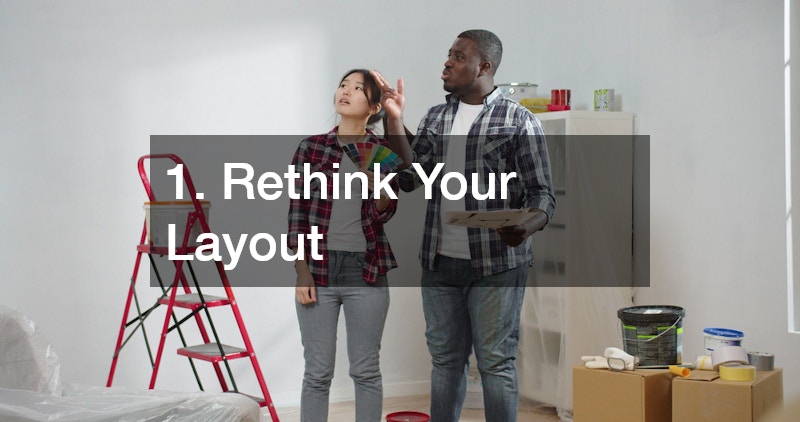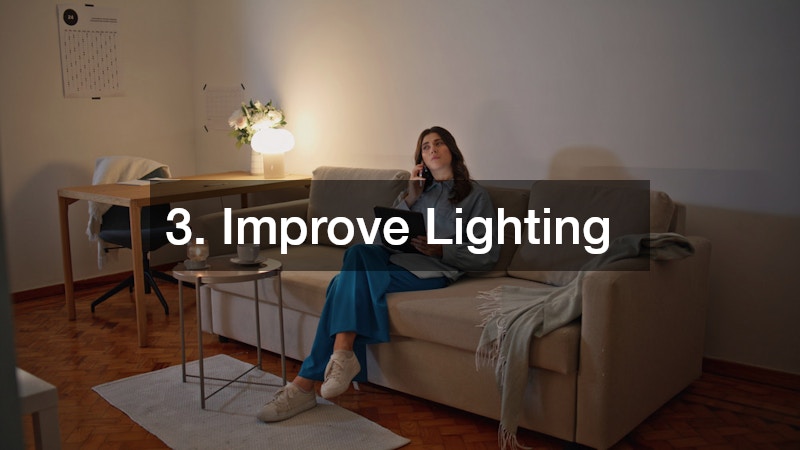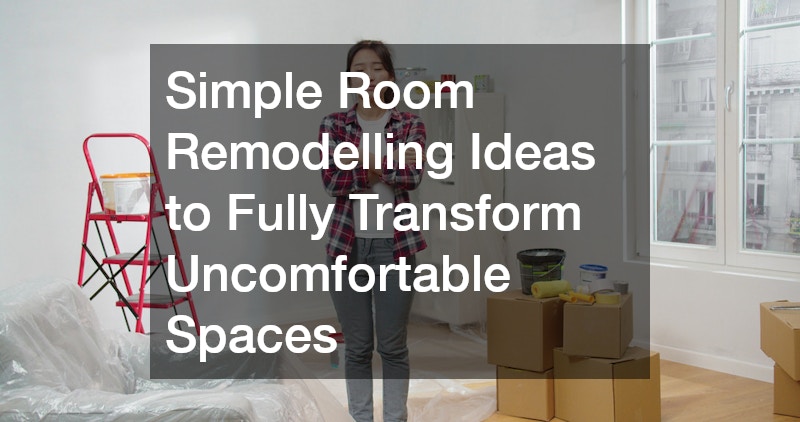A home should be a sanctuary—a place where you feel comfortable, relaxed, and inspired. Yet many rooms feel underwhelming or uncomfortable, whether due to poor layout, outdated features, or lack of proper heating and lighting. The good news is that simple room remodelling ideas can transform even the most awkward spaces into functional, inviting areas.
Renovations don’t have to be overwhelming or expensive. By focusing on key updates and practical improvements, you can completely change the atmosphere of a room while also increasing its functionality and style.
1. Rethink Your Layout

One of the easiest ways to improve an uncomfortable space is to reassess the layout. Cluttered furniture, awkward angles, or unused corners can make a room feel cramped or off-balance.
- Create Zones: In multi-purpose rooms, define zones for different activities—like a reading corner, work area, or relaxation spot.
- Open Up Space: Move bulky furniture away from walkways and windows to create a sense of flow.
- Multi-Functional Furniture: Consider pieces that serve dual purposes, like storage ottomans or foldable desks, to make the most of limited space.
Even small adjustments to how furniture is arranged can dramatically improve the comfort and usability of a room without major renovations.
2. Update Flooring for Warmth and Comfort

Cold or outdated flooring can make a room feel uninviting. Installing underfloor heating services is a highly effective way to add comfort, particularly in bedrooms, bathrooms, and living areas. Warm floors not only make a space cozier but can also improve energy efficiency, as underfloor heating distributes warmth evenly and often requires less energy than traditional heating methods.
In addition to heating, consider updating the floor material. Wooden or vinyl floors add style and warmth, while rugs can soften hard surfaces and define different zones in the room. Combining underfloor heating with aesthetic upgrades creates a room that’s both beautiful and comfortable year-round.
3. Improve Lighting

Lighting plays a major role in the feel of a room. Poor lighting can make spaces look dull, small, or unwelcoming, while well-planned lighting can highlight architectural features and create mood.
- Layered Lighting: Combine ceiling lights, wall sconces, and floor lamps to provide flexibility and depth.
- Natural Light: Maximise sunlight by choosing lightweight curtains or repositioning furniture near windows.
- Accent Lighting: Use task lighting for workspaces and soft ambient lighting for relaxation areas.
Even minor updates like changing lampshades or adding dimmer switches can transform a room’s atmosphere.
4. Refresh Walls and Surfaces
A fresh coat of paint or new wall finishes can instantly change a room’s vibe. Neutral colours often make spaces feel larger and brighter, while accent walls add personality without overwhelming the room.
Renovations don’t always need to be extensive—simple updates such as repainting cabinets, replacing hardware, or adding wall moulding can elevate a room’s style and make it feel entirely new. Adding mirrors can also enhance light and the perception of space, making even small rooms feel open and airy.
5. Upgrade Windows and Curtains
Windows are key to both comfort and aesthetics. Poorly insulated or outdated windows can let in drafts, making a room uncomfortable, while heavy or dark curtains can make a space feel closed in.
- Curtains: Choose curtains that complement your decor while providing functionality. Light, breathable fabrics maximise natural light, while thicker curtains add warmth and privacy.
- Window Treatments: Consider blinds or shades that improve insulation and energy efficiency.
- Window Renovations: Updating window frames or adding double glazing can drastically improve comfort, reduce noise, and support temperature control.
Thoughtful window treatments, combined with a well-chosen curtain style, can transform a room into a welcoming, well-lit space.
6. Incorporate Practical Upgrades
Practical upgrades enhance comfort and make a room feel thoughtfully designed. Adding built-in storage reduces clutter, while shelving or cabinetry keeps essentials within reach.
For bedrooms and living areas, consider underfloor heating services as part of your renovations. This adds a subtle luxury while improving overall comfort. Even small touches—like wall hooks, storage baskets, or multifunctional furniture—can make daily life easier and make a room feel complete.
7. Personalise the Space
Finally, don’t forget the personal touches that make a room feel like yours. Artwork, plants, and decorative accessories reflect your style and make the space inviting. Textiles like cushions, throws, and rugs add colour and texture, creating a cosy and balanced environment.
Renovations don’t always require structural changes. Thoughtful updates that reflect your taste and improve functionality can make a room feel entirely transformed.
Simple room remodelling doesn’t have to be complicated or expensive. By rethinking layout, upgrading flooring with underfloor heating services, refreshing lighting, walls, and windows, and adding practical storage and personal touches, you can transform even the most uncomfortable spaces.
Whether it’s installing stylish curtains, making small renovation updates, or investing in comfort-focused upgrades, these ideas can breathe new life into any room. With careful planning and thoughtful execution, you can create spaces that are both beautiful and functional—rooms where you actually want to spend your time.


